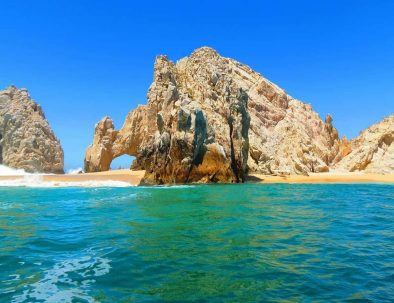5
Days
26 years of experience, plus the knowledge of certified local guides support us.
We are a legally constituted Mexican-German company.
You will feel accompanied throughout your journey, as we will assist you at all times.
As Copper Canyon Mexico Experts we organize all-inclusive trips focused on life experiences and interaction with local indigenous people, discovering and enjoying the nature and culture of each region to visit in this spectacular destination: Copper Canyon - Chihuahua.
Get a close-up look at the grey whale in one of the 4 natural sanctuaries on the coasts of Baja California Sur: El Vizcaino Biosphere Reserve, Laguna Ojo de Liebre, San Ignacio and Magdalena Bay.
Travel aboard the legendary Chepe Express train through the Sierra Tarahumara, the best tourist route in Mexico and one of the 10 most spectacular train rides in the world. Enjoy the breath-taking views of the Copper Canyon in Chihuahua from the comfort of your seat.
Personalised and individual service before and during your stay. So that you can enjoy your trip, live unique moments and unforgettable experiences in the Copper Canyon, Mexico.
Design your ideal Copper Canyon journey by specifying the length and budget of your trip, or provide us with your travel preferences. Our team will create a personalized itinerary that suits your flexibility and preferred travel pace.
Experience an unforgettable train journey on board of the new Chepe Express train and wonder the natural beauty of the Copper Canyon. Enjoy the impressive views of the Sierra Madre and learn about the Raramuri indians culture.
During your next journey to Los Cabos with Condor we invite you to do an extension trip to visit the Copper Canyon destination in Chihuahua. Get a close-up look at the grey whale in one of the 4 natural sanctuaries on the coasts of Baja California Sur: El Vizcaino Biosphere Reserve, Laguna Ojo de Liebre, San Ignacio and Magdalena Bay. Venture into the depths of one of the world's best diving paradises. Enjoy the possibilities of numerous water sports. Walk and enjoy the endemic nature while discovering unique fauna and flora. Let us organise a life experience
Throughout Mexico, whether in small or large cities, you can admire the architecture inherited by the Spanish: prosperous cities, which stood out among others and still keep their cobbled streets, their monumental buildings and their houses with balconies, doors and windows almost intact. We will gladly show you the most beautiful corners.
In the footsteps of the Mayas and Aztecs. We take you to explore the archaeological zone of Chichén Itzá, the ruins of Tulum in front of the sea or the preserved ruins of Palenque and Uxmal in the middle of the jungle. Marvel at the Agua Azul waterfalls or enjoy water fun at Xel-ha and Xcaret.
Just as in other countries there are important national events, in Mexico there is also a great variety of cultural and traditional events, most notably the celebration of the Day of the Dead or the equinox at Chichen Itza. We invite you to live any of our traditions that will surely give a plus to your travel experience
COPPER CANYON MEXICO EXPERTS We will not leave you alone! We will show you not only the most beautiful tourist destinations in Mexico, we also will help you with the organization of the tour.
Our experienced and certified local guides will take care of you during the whole tour.
Our team provides specialized assistance in accord with the interests of your journey from planning to completion of your trip.
We reveal to you when is the best season for your trip and also what you should pack.
Move the mouse over the points on the interactive map and the names of the cities will appear. If you click on a point, a short description of the place opens. If you want to know more about it, we suggest you visit the description by cities.
Because we know Northern Mexico as the back of our hand. Amalia Navarrete, a direct descendant of the Tepehuano ethnic group, was born and raised in northwestern Mexico. She has full knowledge of the Copper Canyon region, something that only native people can offer. For more than 26 years, she and her team have organized trips to the remotest corners of their place of origin, which mass tourism has not yet discovered.
we can say a lot - so read what our customers say: